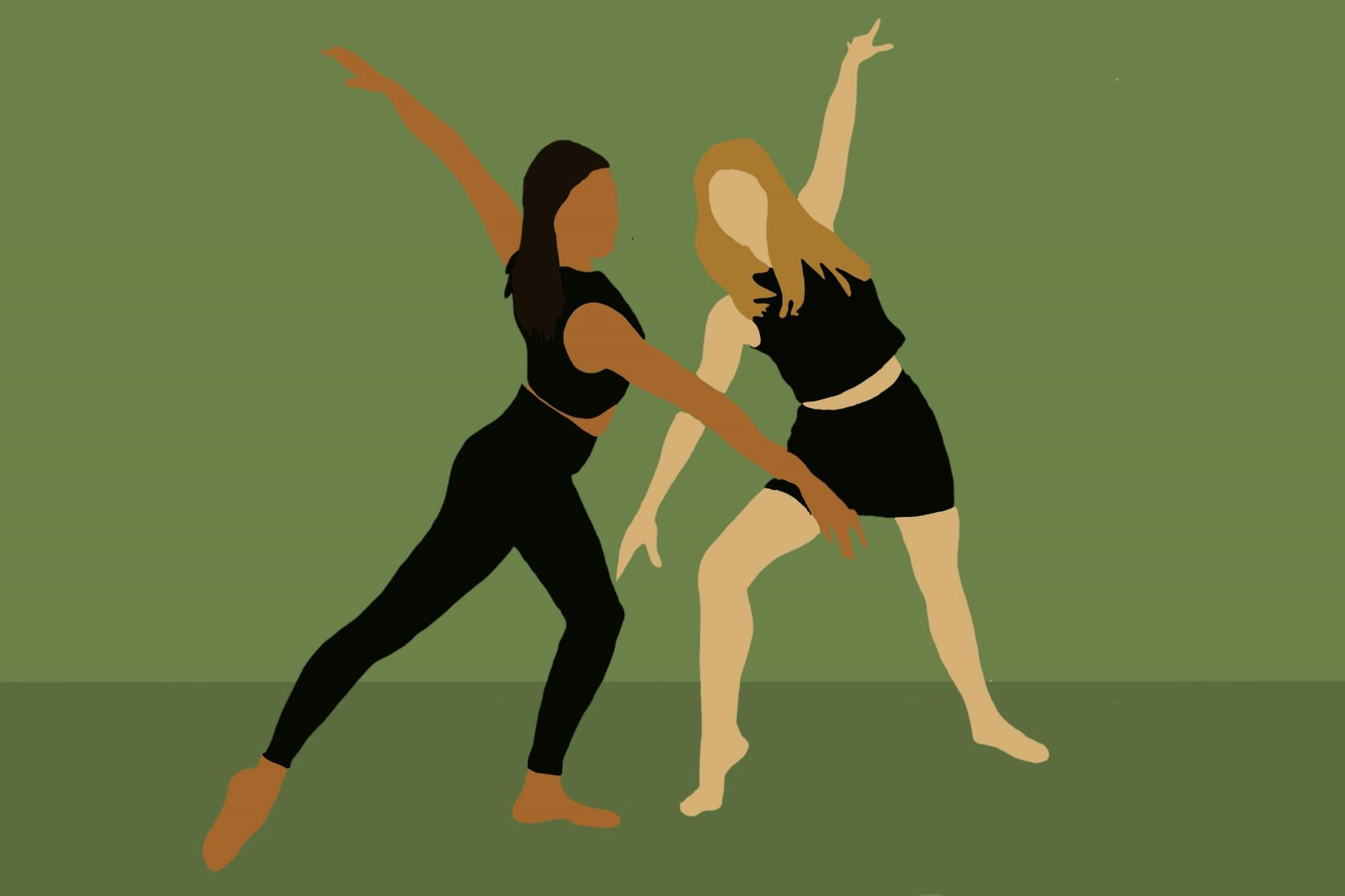Many of us have sat on the beer-infused floor of a fraternity, wondering how matted our pants will be when we stand up. Speakers blare in our ears as even louder cheers from the crowd overtake the sound of the music. As more people squeeze their way in, others bang at the windows hoping to at least watch from outside. Juxtaposed with this sticky, overheated chaos is a spectacle of art and dance just inches away from our faces. Dance at Dartmouth is an experience that can bring students together at 10 p.m. on a random weekday — it is a hallmark of performing arts at the College and a symbol of community.
The five audition-based dance troupes at Dartmouth include Raaz, Fusion Dance Ensemble, Sugarplum, Ujima and Sheba. Each of these groups usually have around 25 members — which fluctuates based on the on- and off-terms of their members — and each perform unique styles of dance.
Dance has been present at Dartmouth for a long time: The oldest dance troupe is Ujima, founded in 1985 as an Office of Pluralism and Leadership organization and originally a Black student group. Ujima generally focuses on hip hop dance but also branches out to reggae and other styles inspired by the interests of their members. Founded in 1995 and 1996 respectively, Sheba also performs hip hop dance pieces while Fusion performs contemporary and lyrical dance — but has also explored jazz and tap.
“We pride ourselves on making the space as inclusive as possible for students of all dance backgrounds to join,” Fusion co-director Ainsley Bryant ’23 said.
New dance groups continue to form and spread the trend of dancing at Dartmouth, with Sugarplum being established in 2009 as a jazz, contemporary and lyrical dance group. Raaz is one of the newest audition-based troupes; it was founded in 2011 and focuses on South Asian inspired dance such as Bhangra, classical styles like Bharatanatyam, Odissi and Kathak as well as Bollywood.
Many dance groups at Dartmouth are typically entirely student-run, with members responsible for everything from choreography to costume design to fundraising. This level of responsibility fosters a strong sense of collaboration and leadership skills among the dancers, according to Sugarplum co-director Emily Gao ’24.
“There is no outside choreography, no faculty advisor that [the team can] rely on that much. We just all work together to choreograph, set the formations and put on shows,” Gao said. “We only have one dance this term where an outside choreographer came in. Normally our dancers choreograph our pieces... and it's always really fun to create something.”
Dartmouth is also home to a selection of other audition and non-audition based groups. The Dartmouth Dance Ensemble is a Hopkins Center for the Arts ensemble professionally led by John Heginbothan and Rebecca Stenn. The Dartmouth College Dance Team is a newer College-sponsored group that was established in 2022. The Dance Team is a competitive club sport that will be participating in the Universal Dance Association Competitions starting next year and performs as a pom line at Dartmouth football and basketball games.
Other dance groups such as PRiSM, SOYEYA African Dance Troupe and Street Soul provide inclusive and diverse spaces for students to explore various types of dance forms. Groups such as Raaz and SOYEYA often serve as cultural spaces within the dance community at Dartmouth, bringing together students from diverse backgrounds while also providing a sense of community and belonging for their members.
“I wanted a community of South Asians because I never had that back home and [Raaz] was the place that I could get it,” Zach Yusaf ’26, a member of Raaz, said.
A unique aspect of Dartmouth dance is the culture of performing in fraternities rather than an actual auditorium, which brings students together in support of both their peers and the performing arts, according to Ujima co-director Jordan Koehler ’23.
“I honestly think it is a lot more fun to be performing in these spaces with people you know and having a close proximity to the crowd,” Koehler said. “You’re right there pretty much in their face when you’re dancing and I think that, energy-wise, it is really exciting and something that being on stage can lack.”
Although performing in Greek houses is a hallmark of the Dartmouth student dance experience, the current renovations underway at the Hopkins Center for the Arts have exacerbated the issue of limited dance spaces on campus.
“With some of the new dance groups arriving, as well as some older dance groups coming back, it’s even more difficult to find dance practice spaces,” Sheba and Street Soul co-director Roman Olavarria ’23 said.
While College-sponsored groups such as the Dartmouth Dance Team and Dartmouth Dance Ensemble are able to directly work with the school to gain support for funding and scheduling spaces to practice and perform, student-led dance troupes often struggle.
Despite current hindrances, dance at Dartmouth College continues to persevere, representing the tight-knit community this school holds and a collective appreciation for student participation in the arts.




